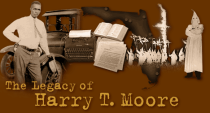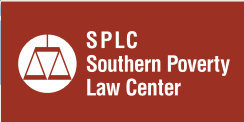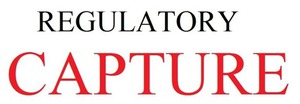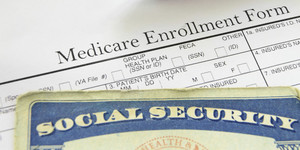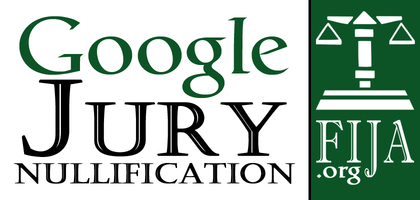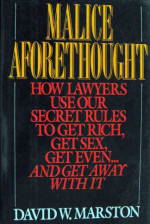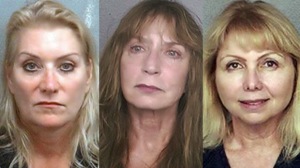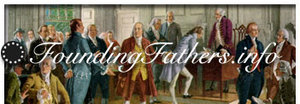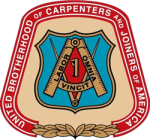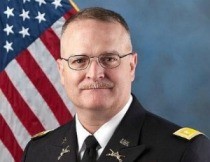The Supreme Court of the United States - The SCOTUS
The Supreme Court at Work
The Supreme Court of the United States
One First Street, NE, Washington, DC 20543
Phone: 202-479-3211
Members:
Chief Justice of the United States JOHN G. ROBERTS, JR.
Associate Justices ANTONIN SCALIA Died
ANTHONY M. KENNEDY
CLARENCE THOMAS
RUTH BADER GINSBURG
STEPHEN G. BREYER
SAMUEL A. ALITO, JR.
SONIA SOTOMAYOR
ELENA KAGAN
Retired
Justices
SANDRA DAY O’CONNOR
DAVID H. SOUTER
JOHN PAUL STEVENS
The Supreme Court consists of the Chief Justice of the United States and such number of Associate Justices as may be fixed by Congress. The number of Associate Justices is currently fixed at eight (28 U. S. C. §1). Power to nominate the Justices is vested in the President of the United States, and appointments are made with the advice and consent of the Senate. Article III, §1, of the Constitution further provides that "[t]he Judges, both of the supreme and inferior Courts, shall hold their Offices during good Behaviour, and shall, at stated Times, receive for their Services, a Compensation, which shall not be diminished during their Continuance in Office." Read more
Supreme Court of the United States
Wikipedia
The Supreme Court of the United States (SCOTUS[1]) is the highest federal court of the United States. Established pursuant to Article III of the United States Constitution in 1789, it has ultimate (and largely discretionary) appellate jurisdiction over all federal courts and over state court cases involving issues of federal law, plus original jurisdiction over a small range of cases. In the legal system of the United States, the Supreme Court is the final interpreter of federal constitutional law, although it may only act within the context of a case in which it has jurisdiction.
The Court consists of the Chief Justice of the United States and eight associate justices who are nominated by the President and confirmed by the Senate. Once appointed, justices have life tenure unless they resign, retire, take senior status, or are removed after impeachment (though no justice has ever been removed). In modern discourse, the justices are often categorized as having conservative, moderate, or liberal philosophies of law and of judicial interpretation. Each justice has one vote, and while many cases are decided unanimously, many of the highest profile cases often expose ideological beliefs that track with those philosophical or political categories. The Court meets in the United States Supreme Court Building in Washington, D.C. Read more
Chief Justice Roberts Issues 2016 Year-End Report
Chief Justice's Year-End Reports on the Federal Judiciary, 2000
through 2016
Fix the Court’s Year-End Report on the Federal Judiciary December 18, 2014
- Court moving to electronic filing - SCOTUS Blog
The Supreme Court is moving toward a full and free-access system for all documents filed in cases before the Justices — a system expected to be working "as soon as 2016," Chief Justice John G. Roberts, Jr., revealed in his annual year-end report (2014)...
- Chief Justice promises fully electronic SCOTUS by 2016 - Sentencing Law and Policy Blog
My petitions and applications before the U.S. Supreme Court. Neil J. Gillespie, non-lawyer
RULES OF THE SUPREME COURT OF THE UNITED STATES - Cornell University Law School LLI
Adopted April 19, 2013, Effective July 1, 2013
Official Rules of the SCOTUS - PDF
Petition 13-7280 Writ of Certiorari SCOTUS (closed)
Gillespie vs. Reverse Mortgage Solutions, Inc., et al.
US Supreme Court docket page - Petition No. 13-7280
Petition denied January 13, 2014
Rehearing denied March 10, 2014
Petition for rehearing Petition No. 13-7280
The Cert Pool Petition No. 13-7280
Affidavit: well-founded fear of political persecution
Urgent Appeal: to Special Rapporteurs, United Nations
Petition-13-7280-SCOTUS-HECM-reverse-mor[...]
Adobe Acrobat document [5.4 MB]
Petition-for-Rehearing-Petition-13-7280.[...]
Adobe Acrobat document [1.8 MB]
Record-No-13-11585-B-US-Eleventh-Circuit[...]
Adobe Acrobat document [8.9 MB]
Petition 12-7747 Writ of Certiorari SCOTUS (closed)
Gillespie v. Thirteenth Judicial Circuit, Florida
US Supreme Court docket page - Petition No. 12-7747
Petition denied February 19, 2013
Rehearing denied April 15, 2013
Fraud or Impairment of 12-7747 discovered May 2013
Index Guide to Petition No. 12-7747
The Cert Pool Petition No. 12-7747
Blog post Petition No. 12-7747
Blog post David Rowland misled Florida
AG, SCOTUS Petition
Petition-12-7747-Writ-of-Certiorari-SCOT[...]
Adobe Acrobat document [2.1 MB]
Petition-for-Rehearing-No-12-7747.pdf
Adobe Acrobat document [4.8 MB]
Index-to-Petition-12-7747-and-Rule-Appli[...]
Adobe Acrobat document [316.8 KB]
Record-No-12-11028-US-Eleventh-Circuit.p[...]
Adobe Acrobat document [10.9 MB]
Record-No-12-11213-C-US-Eleventh-Circuit[...]
Adobe Acrobat document [6.8 MB]
Rule 13.5 - For good cause, a Justice may extend the time to file a petition for awrit of certiorari for a period not exceeding 60 days.
Rule 13.5 Review on Certiorari: Time for Petitioning (Cornell Law)
5. For good cause, a Justice may extend the time to file a petition for a writ of certiorari for a period not exceeding 60 days. An application to extend the time to file
shall set out the basis for jurisdiction in this Court, identify the judgment sought to be reviewed, include a copy of the opinion and any order respecting rehearing, and set out specific reasons why
an extension of time is justified. The application must be filed with the Clerk at least 10 days before the date the petition is due, except in extraordinary circumstances. The application must
clearly identify each party for whom an extension is being sought, as any extension that might be granted would apply solely to the party or parties named in the application. For the time and manner
of presenting the application, see Rules 21, 22, 30, and 33.2. An
application to extend the time to file a petition for a writ of certiorari is not favored.
Application 12A215 GRANTED by Justice Clarence Thomas
Gillespie v. Thirteenth Judicial Circuit, Florida
US Supreme Court docket page Application No. 12A215
Title: Neil J. Gillespie, Applicant
v
Thirteenth Judicial Circuit, et al.
Docketed: August 31, 2012
Lower Ct: United States Court of Appeals for the Eleventh Circuit Case Nos.: (12-11028, 12-11213)
- Aug 13 2012 - Application (12A215) to extend the time to file a petition for a writ of certiorari from October 11, 2012 to December 10, 2012, submitted to Justice Thomas.
- Sep 13 2012 - Application (12A215) granted by Justice Thomas extending the time to file
SCOTUS-Rule-13-5-Application-Gillespie-v[...]
Adobe Acrobat document [10.8 MB]
SCOTUS Rule 22. Applications to Individual Justices
Rule 22. Applications to Individual Justices (Cornell U. Law School)
1. An application addressed to an individual Justice shall be filed with the Clerk, who will transmit it promptly to the Justice concerned if an individual Justice has authority to grant the sought relief.
2. The original and two copies of any application addressed to an individual Justice shall be prepared as required by Rule 33.2, and shall be accompanied by proof of service as required by Rule 29.
3. An application shall be addressed to the Justice allotted to the Circuit from which the case arises. An application arising from the United States Court of Appeals for
the Armed Forces shall be addressed to the Chief Justice. When the Circuit Justice is unavailable for any reason, the application addressed to that Justice will be distributed to the Justice then
available who is next junior to the Circuit Justice; the turn of the Chief Justice follows that of the most junior Justice.
4. A Justice denying an application will note the denial thereon. Thereafter, unless action thereon is restricted by law to the Circuit Justice or is untimely under Rule
30.2, the party making an application, except in the case of an application for an extension of time, may renew it to any
other Justice, subject to the provisions of this Rule. Except when the denial is without prejudice, a renewed application is not favored. Renewed application is made by a letter to the Clerk,
designating the Justice to whom the application is to be directed, and accompanied by 10 copies of the original application and proof of service as required by Rule 29.
5. A Justice to whom an application for a stay or for bail is submitted may refer it to the Court for determination.
6. The Clerk will advise all parties concerned, by appropriately speedy means, of the disposition made of an application.
SCOTUS-Rule-22-Applications-Justice-Thom[...]
Adobe Acrobat document [8.5 MB]
Rule-22-Application-Justice-Clarence-Tho[...]
Adobe Acrobat document [1.2 MB]
SCOTUS-Rule-22-Applications-Justice-Thom[...]
Adobe Acrobat document [1.2 MB]
Scalia says he 'wouldn't be surprised' if SCOTUS overturns the death penalty
Scalia says he 'wouldn't be surprised' if SCOTUS
overturns the death penalty
ABA Journal
By Debra Cassens Weiss
Sept. 24, 2015
Updated: Justice Antonin Scalia delivered his standard defense of originalism in a speech on Tuesday that included an unusual observation about the justices’ stance on capital punishment: Scalia said he "wouldn’t be surprised" if the U.S. Supreme Court overturns the death penalty.
Scalia told students at Rhodes College he has four colleagues who believe the death penalty is unconstitutional, reports the Memphis Commercial Appeal. The Associated Press also covered the speech, but did not include Scalia’s death-penalty remarks.
In a June dissent by Justice Stephen G. Breyer, joined by Justice Ruth Bader Ginsburg, he called for a briefing on whether the death penalty is constitutional. "I believe it highly likely that the death penalty violates the Eighth Amendment," Breyer said in the dissent.
Two days after Scalia’s speech, Pope Francis called for abolition of the death penalty in a speech to Congress. Four Supreme Court justices sitting in the audience, including Ginsburg, did not applaud or visibly react, the Washington Post reports. The other justices in attendance on Thursday were Chief Justice John G. Roberts Jr. and Justices Anthony M. Kennedy and Sonia Sotomayor.
Scalia said in his speech that justices on the current Supreme Court are "terribly unrepresentative of our country" and noted the only justice from the South is Clarence Thomas. The other justices are from California, New York and New Jersey. "Do you really want your judges to rewrite the Constitution?" he asked.
The recent same-sex marriage decision, Scalia said, was the "furthest imaginable extension of the Supreme Court doing whatever it wants."
Scalia said the idea of adding freedoms to the Constitution isn’t "always good, unless you’re an anarchist." The trick, he said, was to balance freedom with order.
Hat tip: Buzzfeed
non-lawyer said:
Posted: Oct 04, 2015 11:28 am CDT
Thank you ECS. I appreciate your support.
Has anyone mentioned that Justice Scalia contends actual innocence is not sufficient to overturn a death sentence conviction, or stop an execution?
Before I get to those cases, see the case of Michael Morton on the CBS News 60 Minutes show with Lara Logan, "Evidence of Innocence: The case of Michael Morton"
Michael Morton (criminal justice)
Wikipedia
Michael Morton (born August 12, 1954) is an American who was wrongfully convicted in 1987 in a Williamson County, Texas court of the 1986 murder of his wife Christine Morton.[1] He spent nearly 25 years in prison before he was exonerated by DNA evidence which supported his claim of innocence and pointed to the crime being committed by another individual. Morton was released from prison on October 4, 2011; the prosecutor was convicted of contempt of court for withholding evidence after the judge had ordered its release to the defense.[2][3] Read more
Okay, cases where Justice Scalia contends actual innocence is not sufficient to overturn a death sentence conviction, or stop an execution.
Scalia’s
Embarrassing Question
Innocence is not enough to get you out of prison.
Slate.com, By Lara Bazelon (writer and attorney)
Juan Melendez (right), a former death row inmate who was exonerated, listens to testimony during a hearing before the Senate Judiciary Subcommittee on the Constitution on June 12, 2002, in Washington, D.C. Melendez sat on death row in Florida for almost two decades before a court finally overturned his murder conviction. Photo by Alex Wong/Getty Images.
[in Herrera v. Collins, 506 U.S. 390 (1993)]
"Writing for the majority, Chief Justice William Rehnquist said that Herrera’s constitutional argument had "elemental appeal" but declined to endorse it because federal courts were not supposed to "relitigate state trials." Herrera’s true remedy, Rehnquist said, rested with the president or the governor of his state, whose power to grant clemency was the "fail safe in our criminal justice system." Entertaining actual innocence claims brought years after the fact were simply too "disruptive" and unfair to the state, which needed to have things settled once and for all. Rehnquist mused that even if one assumed, hypothetically, that an innocence claim could be brought, the bar for the prisoner to clear "would necessarily be extraordinarily high."
"Concurring in judgment, Justices Antonin Scalia and Clarence Thomas would have gone even farther. Taking issue with the majority’s mere hypothetical entertainment of an innocence claim, Scalia wrote: "There is no basis, tradition, or even in contemporary practice for finding that in the Constitution the right to demand judicial consideration of newly discovered evidence of innocence brought forward after a conviction." He concluded, "With any luck, we shall avoid ever having to face this embarrassing question again."...
Lawyers need to move beyond ‘access to justice’ to close the legal services gap
Lawyers need to move beyond ‘access to justice’
to close the legal services gap
Legal Rebels - The New Normal
ABA Journal
By Dan Lear
Sept. 1, 2015
By many measures, lawyers’ "access to justice" initiatives are entirely ineffective:
• A study (PDF) from the American Bar Association’s Standing Committee on the Delivery of Legal Services found that high-volume state courts are at "saturation level" of pro se litigants.
• According to the 2012-2013 World Justice Project’s Rule of Law Index (PDF), more than four out of five low-income litigants in the United States go it alone because they feel priced out of the legal market.
• Almost 60 percent of small business owners who had a legal issue did not hire a lawyer for that problem according to a study (PDF) done by legal insurance provider Legal Shield.
• A recent study by the Administrative Office of the Courts found that pro se bankruptcy filings are increasing twice as fast as overall filings.
• U.S. District Court’s 2012-2013 data (PDF) shows that 10 percent of nonprisoner federal court filings are now pro se.
• And there a really large and growing list of online document services and sites that individuals are using to do for themselves what lawyers could be doing for them.
But don’t blame lawyers. They’re trying. ABA Model Rule 6.1 says they should render at least 50 hours of pro bono public legal services every year. Also, while it has seen its funding decreased somewhat in recent years, the Legal Services Corporation receives more than $300 million each year to deliver legal resources to the underserved.
So what’s wrong?
Expanding legal services access beyond the poorest and most disadvantaged is a significant challenge. Attempts to bring similar types of services and resources to large numbers of people—from infrastructure to transportation to medical care—have been tremendously expensive and time-consuming. Doing the same for legal services will certainly be a unique challenge.
Lao Tzu said: "The journey of a thousand miles begins with one step." And one good initial, but admittedly small, step for legal services is semantics. Specifically, instead of talking about an "access to justice" gap let’s switch the rhetoric and consider the "access to legal services" gap instead.
Many modest means or middle-income individuals seeking legal services are not seeking "justice" through the legal system. Most just want a will, an estate plan, some limited advice on their employment contract or business, or any number of other things that don’t have anything to do with "justice." Besides what justice is and what it means varies widely from person to person and situation to situation. aThe pursuit of an arguably amorphous definition of justice is a waste of time and resources when all someone wants is, for example, a will.
Modest-means clients are also different than the access-to-justice clients. For one, while they may not be able to afford traditional full representation legal services but they can pay something. Further, many modest means clients are middle-income individuals, so they’re more likely better educated with better access to technology or other resources that would help them self-educate, receive unbundled legal services delivered partially or fully though technology or online, or navigate the legal system with only limited guidance from an attorney.
Under the traditional "access to justice" model, access-to-services clients would receive extensive one-on-one attention from an attorney to address their legal need. And at no cost.
This is staggeringly inefficient. While one-on-one representation may be ideal for true miscarriages of justice, the lack of a will or even someone to review your employment agreement is not a miscarriage of justice. It may not even involve justice. Further, there’s no reason not to let those who can pay some to do so.
But let’s not confuse the justice and services problems by using the same term for both.
There are pervasive legal access issues throughout the economy—from pro se litigants, to entrepreneurs who need business help, to families without wills or simple estate plans. This access gap is a significant problem for the legal profession and it won’t be solved overnight. It might not even be solved in our lifetime. But greater precision in how we talk about access challenges is an easy first step in the right direction.
___________________________________________________________________________________
Dan Lear is currently director of industry relations for Avvo. As a technology-focused business lawyer, he advised companies from startups to the Fortune 100 and helped develop agreements and terms for early cloud services offerings. In 2015 he was named to the FastCase 50 list—and in 2014 Dan was honored with the Washington State Bar Association President’s Award for his participation in and and advocacy of legal technology projects locally and nationally.
Editor’s note: The New Normal is an ongoing discussion between Paul Lippe, the CEO of Legal OnRamp, Patrick Lamb, founding member of Valorem Law Group and their guests. New Normal contributors spend a lot of time thinking, writing and speaking about the changes occurring in the delivery of legal services. You’re invited to join their discussion.
SCOTUS justices should reveal their votes on cert petitions, law prof argues
SCOTUS justices should reveal their votes on cert
petitions, law prof argues
ABA Journal Law News Now
By Debra Cassens Weiss
Posted Sep 25, 2015 09:15 am CDT
The U.S. Supreme Court should announce the vote tallies when it accepts or rejects cert petitions, a law professor argues.
Writing in the New York Times, Stanford law professor Jeffrey Fisher argues that the court should "lift the veil of secrecy that shrouds" its decisions to hear cases by announcing how each justice votes on each cert petition.
The court gets about 8,000 cert petitions each year, but only about 75 cases are selected for hearing.
"These votes are more consequential than anything said at oral argument," Fisher writes. "If some justices regularly vote to hear appeals from corporations and never from employees, the public ought to know this. If others often vote to hear petitions from civil rights groups but never from state or local governments defending their policies, the public should know this, too." Read more
Chief Justice John Roberts' Supreme Court at 10 years
Chief Justice John Roberts' Supreme Court at 10, defying
labels
USA TODAY
By Richard Wolf
Sept 29, 2015 at 10:35 a.m. EDT
WASHINGTON — Three years into John Roberts' tenure as chief justice of the United States, the Supreme Court ruled by one vote that the Second Amendment protects the right to keep guns at home for self-defense.
Seven years later to the day, the court ruled — again by one vote — that the 14th Amendment requires states to issue marriage licenses to same-sex couples.
Leaning right on guns but left on gays, right on race and religion but left on health care reform, the Roberts Court reaches its 10-year anniversary this week at the fulcrum of American public policy, culture — and politics.
From the court's landmark Citizens United v. Federal Election Commission decision that allows unlimited corporate spending in political campaigns to its razor-thin ruling that upheld President Obama's signature health care law, the high court under Roberts has struggled to balance a strict reading of the Constitution and federal statutes against the pressures of politics and public opinion. Read more
Posner dishes on senile federal judges, judicial snark and law prof 'refugees' in upcoming book
ABA Journal Law News Now
By Debra Cassens Weiss
Posted Sep 10, 2015
Some federal judges continue working despite senility. One federal appeals court is so divided that the opposing factions won’t eat lunch together. Some law professors are "refugees" escaping from more competitive or less lucrative fields.
Those are some of the criticisms expressed by Judge Richard Posner in an upcoming book set for release in January, the Wall Street Journal Law Blog reports. The book, Divergent Paths, is touted as an examination of the gap between the judiciary and law schools, but it is more of a critique of the two branches of the legal profession, according to the Law Blog.
Posner, a judge on the Chicago-based 7th U.S. Circuit Court of Appeals, spends "hundreds of pages detailing the shortcomings of judges, law professors and students," according to the Law Blog. It obtained a review copy of the book and highlighted eight "provocative passages." They include:
- "Some federal judges do not work very hard, and for reasons unrelated to age or infirmity. It’s not so much that they don’t put in the hours; it’s that they tend to treat the job as a civil service sinecure and duck the intellectual challenges that face a federal judge ….
- "Not being subject to compulsory retirement and able to delegate much of their work to staff, federal judges sometimes fail to retire even when old age and its related ills have greatly impaired their judicial performance. To be blunt, there is a problem of judicial senility and it is growing with the general increase in the longevity of the American population."
- "Sometimes the members of an appellate court don’t get along with each other—which is not actually a big surprise, when one bears in mind the resemblance of an appellate court to marriage in a culture of arranged marriage with no divorce. Lack of collegiality may be expressed in snarky or even intemperate dissents and concurrences, in judges’ nitpicking of the opinions of colleagues even when agreeing with the analysis in those opinions, in slow voting on opinions circulated by the other judges, in rivalry; in professional jealousy. … In one of the federal courts of appeals today the judges of opposing factions will not eat lunch together."
- "The increase in the number of law schools has caused a reduction in the average quality of law school graduates and a concomitant reduction in the average quality of lawyers who practice in the federal courts. And the increased size of law school faculties has resulted in an increased number of the faculty members whom I’ve termed ‘refugees’ from more competitive or less lucrative fields and who have little interest in the actual judicial process and little ability to contribute to that process." Read online
Supreme Court Approval Rating Drops to 25-Year Low
Supreme Court Approval Rating Drops to 25-Year Low
ABA Journal Law News Now
By Debra Cassens Weiss
May 2, 2012
Only 52 percent of the public has a favorable view of the U.S. Supreme Court, down from a previous low of 57 percent in 2005 and 2007.
The favorability rating is at its lowest point in 25 years, according to a press release on the survey by the Pew Research Center for the People & the Press. The poll was conducted in April after the Supreme Court held oral arguments on the
constitutionality of the health care law.
Fifty-six percent of Republicans and 52 percent of Democrats and independents give the court favorable ratings. (Others in the survey identified themselves as having no
party preference, members of other parties, or "leaning" toward Democrats or Republicans, according to a questionnaire summary.)
Among supporters of the health-care law, 52 percent have a favorable view of the Supreme Court. Among the bill's opponents, 55 percent view the court favorably.
Read more
- Hat tip to How Appealing
- Esquire: Half of America Hates the Roberts Court
Supreme Court Approval Rating Drops to 2[...]
Adobe Acrobat document [526.8 KB]

























